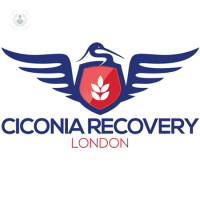Dual pathology
What is dual pathology?
The term dual pathology is a term used in the field of mental health to refer to patients who simultaneously have an addiction and a mental health disorder.
An addiction can be to coffee, alcohol, pain killers, tobacco, or to cannabis, cocaine, amphetamines, opioids and other recreational and illegal substances. The addiction can also be an addiction to gambling or gaming.
Mental health disorders can range from anxiety disorders, mood disorders, personality disorders, schizophrenia, psychosis and ADHD.
How is a dual pathology diagnosed?
In order to identify a dual pathology, there are criteria from the diagnostic manuals of psychiatry (DSM) that differentiate between primary disorders (not associated with substance use or due to a disease with a recognised medical cause) and substance-induced disorders and their expected side effects that are the result of the consumption or withdrawal of a substance.
Symptoms of dual pathology
The most frequent symptoms of dual pathology are:
- High levels of impulsivity
- Aggression and violence
- Not respecting guidelines or rules
- Routine disorder in everyday life and paranoid thoughts
- Marginality and wandering
In addition to these symptoms are the symptoms associated with the addiction, be it symptoms related to alcohol abuse or substance overuse.

Some symptoms of dual pathology may be aggression, violence and marginality.
What are the causes of dual pathology?
There are different causes that can lead to a dual pathology, which include:
- Mental health disorder: suffering from a type of mental health disorder is a risk factor that can lead to an addiction.
- Substance use: one of the consequences of substance use is that it can lead to a dual pathology.
- Common causal elements: common vulnerability factors surrounding a person is another possible cause of dual pathology that can facilitate the appearance of a mental health disorder or addiction.
- Independent disorders: there are cases in which no cause-effect can be found between an addiction and a mental health disorder.
Can it be prevented?
Prevention focuses on avoiding risk factors that may lead to an addiction. For example, avoiding cocaine use will help if the patient suffers from a mental disorder. Adhering to the treatment plan prescribed by the specialist is another preventive measure, as well as following therapeutic and rehabilitative activities correctly. A suitable and supportive work and living environment is another measure that can favour the prevention of dual pathology.
Treatments for dual pathology
It’s recommended that patients receive a combined treatment, including drug addiction treatment and psychiatric and psychological mental health treatment.
What specialist treats it?
A psychiatrist treats dual pathology. Find a psychiatrist in your area through Top Doctors.






